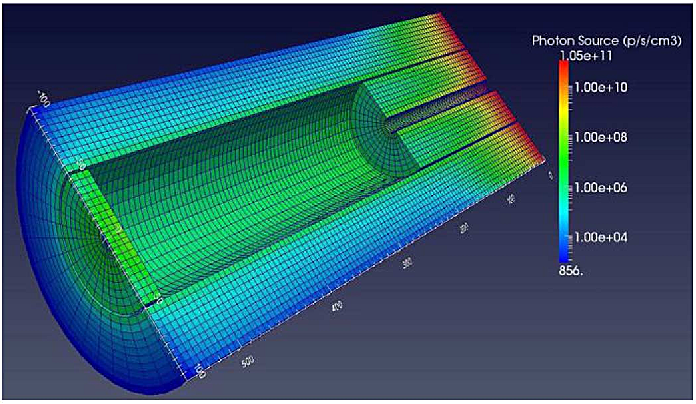R2S-UNED
The facilities involving the presence of neutron fields get their materials activated. This represents a radioactive inventory that emits decay photons. Depending on the location inside the facility, the decay photons field might be challenging to the survivability of the electronics, or to the human intervention. It has a strong impact on the plant safety and economics. Thus, the understanding of the decay photon field to minimize it and mitigate its effect is key to ensure the viability of those facilities.
However, the accurate determination of the decay photon fields is one of the most complex activities in the field of the nuclear analysis nowadays. It involves sophisticated algorithms, the coupling of computational codes and the use of High-Performance Computing (HPC) infrastructures.
In this context, TECFIR / UNED developed in 2012 the tool called R2S-UNED. It is an implementation of the Rigorous-two Steps method making use of MCNP5 for the radiation transport and ACAB for the determination of the radioactive inventory. It presents the main advantage of ensuring a full and correct treatment of the radioactive inventory, and it is one of the most advanced implementations of the R2S method, enabling unequal features in terms of spatial accuracy.
R2S-UNED is recommended for the initial exploration of the decay photon field features in a given facility and/or for facilities with the presence of intense neutron fields. For more information about R2S-UNED, see the following paper:
- P. Sauvan, J. P. Catalán, F. Ogando, R. Juárez and J. Sanz. “Development of the R2SUNED Code System for Shutdown Dose Rate Calculations”, IEEE Transactions on Nuclear Science, Volume 63 (2016), Pages 375-384
